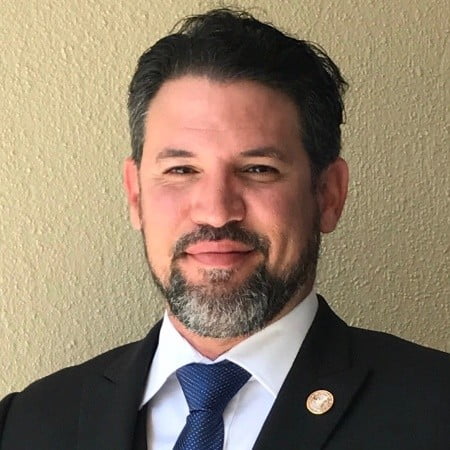Overview of Polysubstance Abuse
– Definition of Polysubstance Abuse
Polysubstance abuse is when someone uses more than one drug at the same time or in close succession. This might mean mixing alcohol with cocaine, using opioids and benzodiazepines together, or taking multiple street or prescription drugs to feel a stronger high. The key problem is that these combinations often make each drug more dangerous.
– Prevalence of Polysubstance Abuse
According to the Substance Abuse and Mental Health Services Administration (SAMHSA), nearly 50% of people seeking treatment for drug addiction report using more than one substance. That means millions of Americans are dealing with polysubstance abuse every year.
Sadly, it’s a trend that’s increasing. The National Institute on Drug Abuse (NIDA) found that over 70% of opioid overdose deaths in 2021 involved another substance like benzodiazepines, cocaine, or alcohol.
– Short-Term and Long-Term Effects of Polysubstance Abuse
The short-term effects of mixing substances can be scary—even deadly. When drugs interact, they can overwhelm the body’s systems, causing:
- Trouble breathing
- Seizures
- Heart failure
- Blackouts
- Overdose
In the long term, polysubstance abuse can damage your brain, liver, heart, and mental health. It also makes addiction harder to treat because the body becomes dependent on multiple substances at once.
As actor Robert Downey Jr. once said during recovery, “I have a sense of destiny that you can’t shake—if you stay clean.”
Recovery is possible. But it starts with understanding the problem.
Signs and Symptoms of Polysubstance Abuse
– Behavioral Indicators
One of the biggest red flags is unpredictability. People struggling with polysubstance abuse may:
- Mix pills, powders, or drinks
- Frequently change the drugs they use
- Take drugs in secret or lie about what they’ve taken
- Steal or borrow money without explanation
- Drift away from friends or family
You may notice mood swings, erratic sleep patterns, or a lack of interest in hobbies and responsibilities.
– Physical Symptoms
Different drugs cause different physical effects, but some common symptoms of polysubstance abuse include:
- Red or glassy eyes
- Slurred speech
- Frequent nosebleeds (from snorting substances)
- Weight loss or gain
- Track marks or bruises
- Trouble walking or staying alert
Because multiple substances are involved, these symptoms often overlap or appear more intense.
– Psychological Symptoms
Polysubstance abuse also affects mental health. You might notice:
- Anxiety
- Depression
- Paranoia
- Hallucinations
- Memory problems
- Poor decision-making
These issues may worsen as drug use continues. In some cases, users become detached from reality or develop suicidal thoughts.
Diagnosis and Assessment
– Diagnostic Criteria for Polysubstance Abuse
In the past, polysubstance abuse had its own classification in diagnostic manuals. Today, it’s typically diagnosed under Substance Use Disorder (SUD) with multiple substances listed. Still, you may hear providers refer to polysubstance abuse icd-10 codes during assessment or treatment.
– Assessment Methods
Healthcare providers use several tools to assess polysubstance abuse, including:
- Clinical interviews
- Drug screening tests
- Mental health evaluations
- Patient questionnaires
They’ll ask about the types of substances used, how often, and in what combinations. Honesty is essential here—accurate information can save your life.
– Medical and Psychological Evaluations
Doctors may also check for:
- Organ damage (liver, heart, brain)
- Nutritional deficiencies
- Co-occurring mental health disorders
- Risk of withdrawal complications
A full evaluation helps create a personalized treatment plan.
Treatment Options for Polysubstance Abuse
– Detoxification and Withdrawal Management
The first step in treatment is detox. This process removes drugs from the body safely and under supervision. Because withdrawal can be dangerous—especially when multiple substances are involved—medical detox is highly recommended.
You may experience:
- Nausea
- Sweating
- Shaking
- Anxiety
- Insomnia
- Hallucinations (in severe cases)
Doctors may use medications to ease symptoms and prevent complications.
– Inpatient and Outpatient Rehabilitation
After detox, rehab offers the structure and support needed for long-term recovery.
Inpatient rehab is intensive and involves living at the facility full-time. It’s best for people with severe addictions or mental health issues.
Outpatient rehab offers more flexibility and is ideal for those who have strong support at home. Both options include:
- Therapy
- Group counseling
- Life skills training
- Relapse prevention planning
Treatment for polysubstance abuse may take longer than single-substance recovery, but it’s possible with the right team.
– Psychotherapy and Counseling
Therapy is essential. Some effective approaches include:
- Cognitive Behavioral Therapy (CBT): helps change unhealthy thoughts and behaviors
- Dialectical Behavior Therapy (DBT): teaches emotional regulation and coping skills
- Motivational Interviewing (MI): builds motivation to change
- Family Therapy: involves loved ones in the healing process
Therapists may also address trauma, depression, or anxiety—issues that often go hand in hand with addiction.
Prevention and Support
– Educational Campaigns and Public Awareness
Prevention starts with awareness. Schools, communities, and families can help by:
- Teaching the dangers of mixing substances
- Promoting healthy coping strategies
- Encouraging open conversations about stress, trauma, and peer pressure
Many nonprofits and local governments offer free resources for prevention education.
– Support Groups and Recovery Programs
Support doesn’t stop after rehab. Ongoing recovery is critical, and support groups can be a lifesaver.
Some popular options include:
- Alcoholics Anonymous (AA)
- Narcotics Anonymous (NA)
- SMART Recovery
- Dual Recovery Anonymous (for co-occurring mental health issues)
These groups offer structure, community, and accountability. They also help people feel less alone.
– Relapse Prevention Strategies
Staying sober takes planning. Relapse prevention includes:
- Avoiding triggers (people, places, situations)
- Building a strong support network
- Creating healthy routines
- Continuing therapy
- Setting goals and tracking progress
Relapse doesn’t mean failure—it means a chance to learn and strengthen your recovery.
Final Thoughts: Recovery Is Within Reach
Polysubstance abuse is dangerous, complex, and more common than you might think. Whether it’s alcohol mixed with pills, stimulants with depressants, or prescription drugs with street drugs—the risks are real.
But so is recovery.
If you’re reading this and struggling, know that help is out there. Whether you’re looking up the icd 10 code for polysubstance abuse, calling a helpline, or just thinking about change—you’ve already taken the first step.
As Johann Hari once said, “The opposite of addiction is not sobriety—it’s connection.”
You are not alone. And your story can change.








